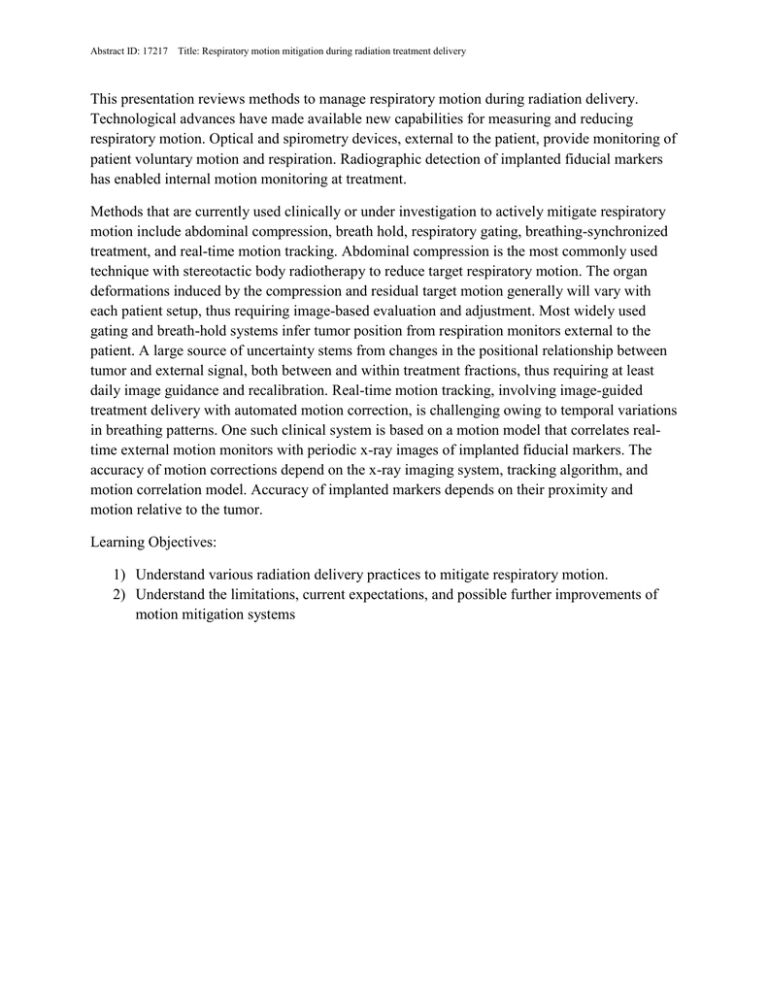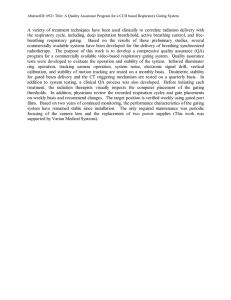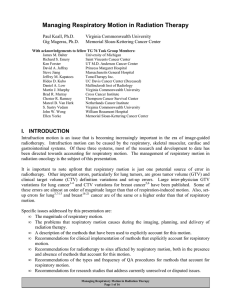This presentation reviews methods to manage respiratory motion during radiation... Technological advances have made available new capabilities for measuring and...
advertisement

Abstract ID: 17217 Title: Respiratory motion mitigation during radiation treatment delivery This presentation reviews methods to manage respiratory motion during radiation delivery. Technological advances have made available new capabilities for measuring and reducing respiratory motion. Optical and spirometry devices, external to the patient, provide monitoring of patient voluntary motion and respiration. Radiographic detection of implanted fiducial markers has enabled internal motion monitoring at treatment. Methods that are currently used clinically or under investigation to actively mitigate respiratory motion include abdominal compression, breath hold, respiratory gating, breathing-synchronized treatment, and real-time motion tracking. Abdominal compression is the most commonly used technique with stereotactic body radiotherapy to reduce target respiratory motion. The organ deformations induced by the compression and residual target motion generally will vary with each patient setup, thus requiring image-based evaluation and adjustment. Most widely used gating and breath-hold systems infer tumor position from respiration monitors external to the patient. A large source of uncertainty stems from changes in the positional relationship between tumor and external signal, both between and within treatment fractions, thus requiring at least daily image guidance and recalibration. Real-time motion tracking, involving image-guided treatment delivery with automated motion correction, is challenging owing to temporal variations in breathing patterns. One such clinical system is based on a motion model that correlates realtime external motion monitors with periodic x-ray images of implanted fiducial markers. The accuracy of motion corrections depend on the x-ray imaging system, tracking algorithm, and motion correlation model. Accuracy of implanted markers depends on their proximity and motion relative to the tumor. Learning Objectives: 1) Understand various radiation delivery practices to mitigate respiratory motion. 2) Understand the limitations, current expectations, and possible further improvements of motion mitigation systems







